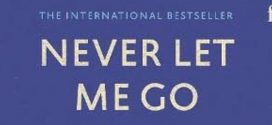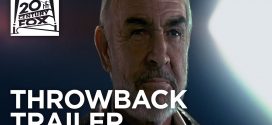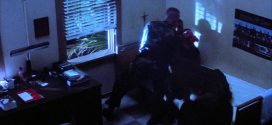While the two biggest Hollywood production houses have been competing to re-create the animated world of D.C. comics and Marvel Comics in a series of films featuring Spiderman, Superman, Batman, Avengers, and counting, this genre appears to have regained the popularity it enjoyed with children when television was still a new kid on the block and print media was all-powerful.
The Adventures of Tintin is one of those highly popular cartoon series that feature the boy hero accompanied by his faithful dog Snowy going from one exciting adventure to another. It started in Europe, when Belgian cartoonist Georges Remi aka Here published the series of 24 comic albums starting in 1929. Almost 90 years later, the stories have been translated in more than 70 languages and even in India there are dedicated ardent fans who grew up with these comics and would pay enormous amount of money to buy these comics.
The series has inspired numerous TV adaptations, theatre drama, video games, memorabilia including action figures and very official stamps and coins. It is not surprising then that a number of movies have been made based on these stories including:
- The Crab with the Golden Claws (1947)
- Tintin and the Golden Fleece (1961)
- Tintin and the Blue Oranges (1964)
- Tintin and the Temple of the Sun (1969)
- Tintin and the Lake of Sharks (1972)
The trend continues in 21st century with Steven Spielberg‘s 3D motion capture film called The Adventures of Tintin: The Secret of the Unicorn which was released in 2011.
| Movie | : | The Adventures of Tintin: The Secret of the Unicorn |
| Director | : |
Steven Spielberg
|
| Based on | : | The Adventures of Tintin Dialogs: Hergé |
| Produced by | : | Steven Spielberg, Peter Jackson, Kathleen Kennedy |
| Written by | : | Steven Moffat, Edgar Wright, Joe Cornish |
| Music By | : | Songs: John Williams |
| Editor | : | Michael Kahn |
| Cinematography | : | Janusz Kamiński |
| Production Companies | : | Nickelodeon Movies, Amblin Entertainment, The Kennedy/Marshall Company, WingNut Films, Hemisphere Media Capital, |
| Distributed by | : | Paramount Pictures, Columbia Pictures |
| Release Date | : |
23 October 2011 (Brussels/Paris premiere), 21 December 2011 (US) |
| Starring | : |
Jamie Bell (Tintin), Andy Serkis (Captain Haddock and Sir Francis Haddock), Daniel Craig (Ivan Ivanovitch Sakharine and Red Rackham), |
It is supposed to be first episode of a trilogy and the animation and special effects were provided by Weta Digital, the same company that worked for the Lord of the Rings and The Hobbit films. The film script combined three of Here’s albums including
- The Crab with the Golden Claws (1941)
- The Secret of Unicorn (1943)
- Red Rackham’s Treasure (1944)
Book Plot:
It is 1955, and Tintin and Snowy are browsing in an outdoors market on a lovely day, when Tintin finds a beautiful miniature model of a ship called The Unicorn. The ship, however, immediately seems to attract multiple other buyers and interested parties, who want it in any way they can get it, including brutal force and theft. This gets Tintin interested and when Snowy accidentally breaks the model ship releasing a scroll of parchment, Tintin decides to go to a library and do some research. In his absence though, the ship is stolen and soon after Tintin and Snowly are abducted by Sakharine’s goons and packed off on a ship for voyage to unknown.
The funny track of detectives Thomson and Thompson also runs in parallel when they try to track and arrest a pickpocket, who proves to be a kleptomaniac.
By now, Tintin has a glimpse of the truth and being the resourceful boy that he is, he escapes and lands straight into the cabin of Captain Haddock who seems to do nothing but drink whiskey and tell half-remembered stories of his grandfather who was a great seaman. Together they escape on a lifeboat and later capture a seaplane of their enemies to fly towards Bagghar, where the archenemy is headed.
More exciting chases are to follow, but the story we learn in bits and pieces is about Sir Francis Haddock, a 17th century captain of “The Unicorn” which was coming home with bounty when attacked by pirate ship led by Red Rackham. We see their fight, Red Rackham’s betrayal and ‘The Unicorn’ sinking to the bottom of the sea with the treasure still on board. But, Sir Francis managed to come home and he left a message in three parts: each concealed in a miniature ship that he gave to each of his three sons.
So, now Tintin knows that there should be three ships and three scrolls and that Sakharine is going to Bagghar to capture the last ship and the last scroll. A lot more of the exciting chase sequences and fights later, Tintin and Captain Haddock acquire the information but it does seem to be a dead end as it leads them back to where they had started: Sir Francis Haddock’s home. Where do they go from now? Where is the treasure?
The film is beautifully made and would be enjoyable even for adults. It was a commercial success and was also the first non-pixar animated films to gain accolades.
The making of the film is also a story of its own, as Steven Spielberg became a Tintin fan as far back as in 1981 and acquired the film rights in 1984. Incidentally, before his death in 1983, Here had become a fan of Spielberg’s work and considered him the only person suitable to make Tintin movies. Unfortunately, Here died before finalising the deal. And there were lots of ups and down including Spielberg playing with the idea of a live film, an animated film, and at last a motion capture version. At one point of time the rights lapsed and Warner Bros was interested in them too.
The concept was finalised only when Peter Jackson, another Tintin fan, came onboard with his experience of motion capture technology in 2007 and the digital filming started. However, it took a very long time due to various problems, but the final result is worth the wait.
If you are Tintin fans, you have probably already watched it. If not, a good way to start.
Our rating: 8 out of 10.
P.S. There have been multiple announcements about the sequel films, however, the film just seems to be getting through same problems as the first one.
 ThinkerViews – Views And Reviews Personal views and reviews for books, magazines, tv serials, movies, websites, technical stuff and more.
ThinkerViews – Views And Reviews Personal views and reviews for books, magazines, tv serials, movies, websites, technical stuff and more.



